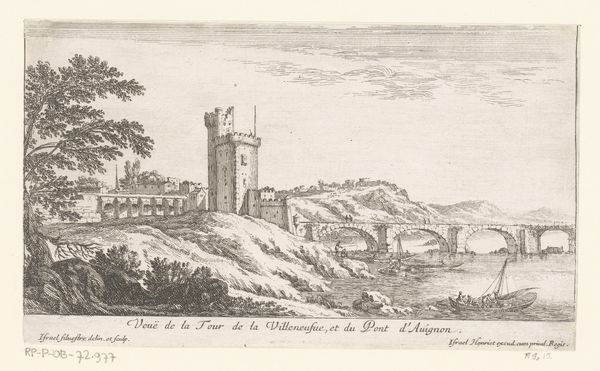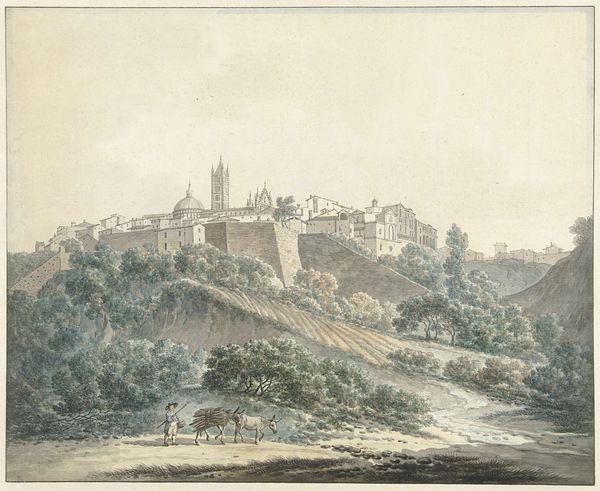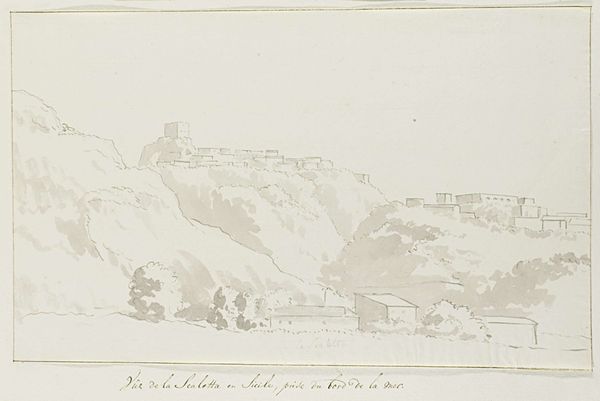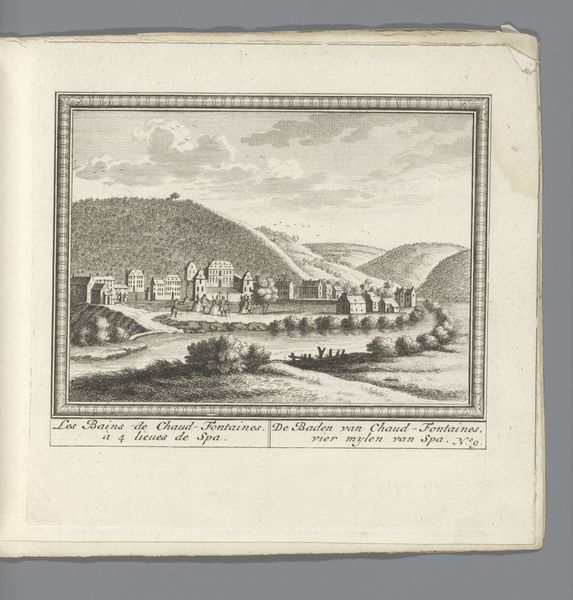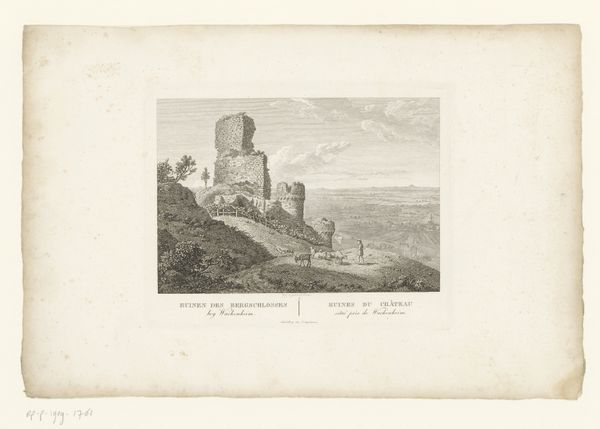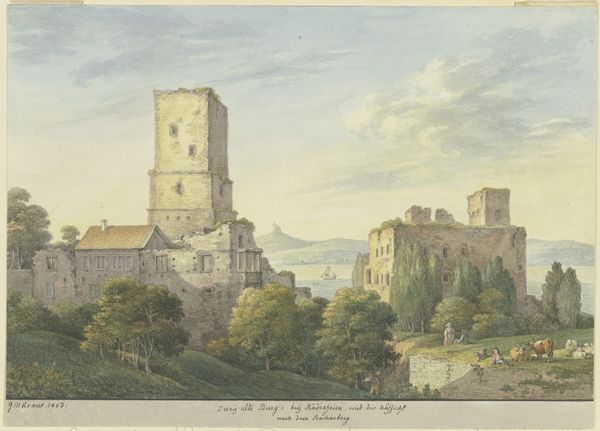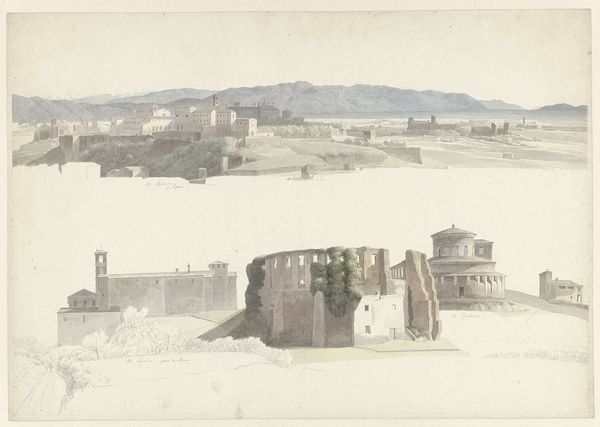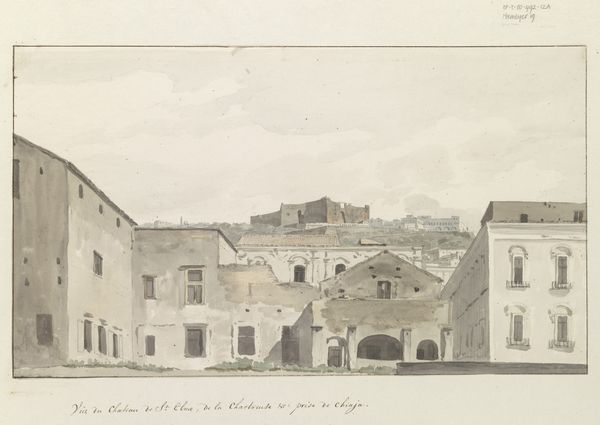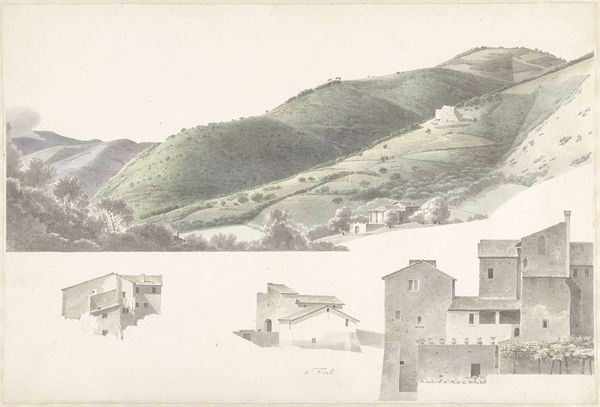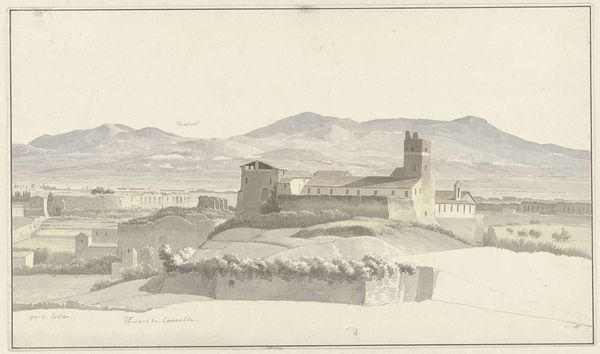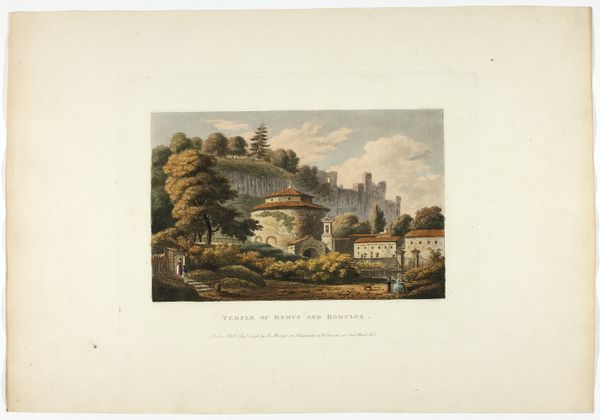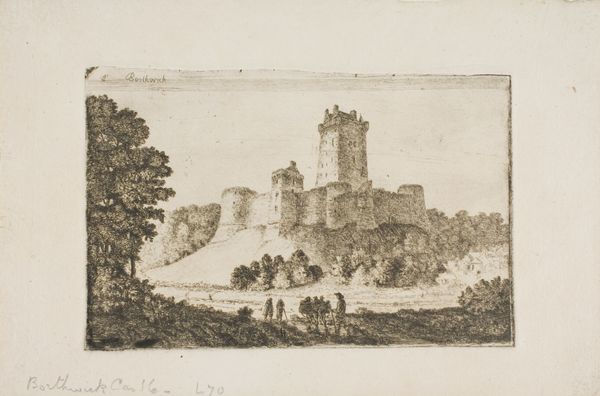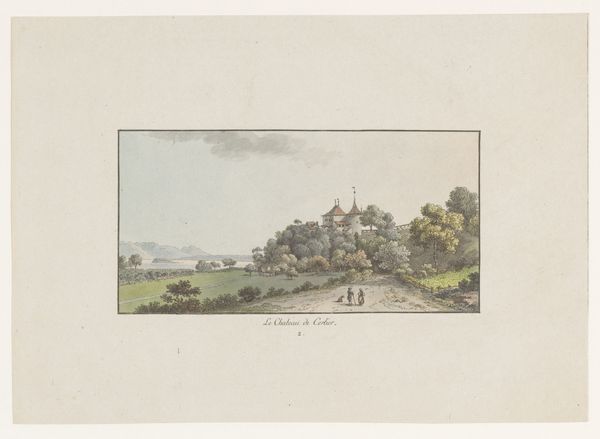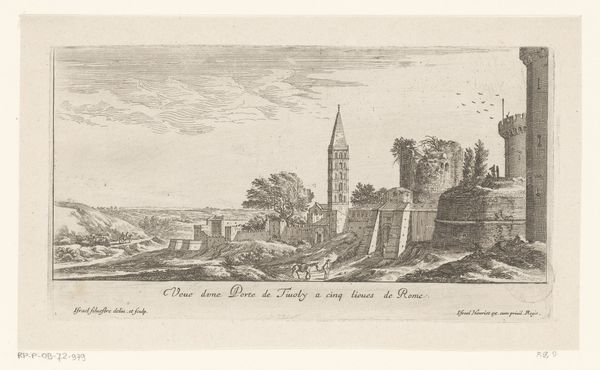
Dimensions: height 181 mm, width 495 mm
Copyright: Rijks Museum: Open Domain
Curator: Sobering! My first impression is the subdued palette; the light, almost washed-out colors create a wistful atmosphere, hinting at a landscape tinged with nostalgia, as if the artist is presenting the image from memory, not a first hand account. Editor: That’s fascinating! This watercolour, “View of Monteforte Irpino and Castello San Martino,” was made by Louis Ducros in 1778. It reminds us that during this time, and into the Romantic Era, it was in vogue to create landscapes en plein air. It prompts us to reconsider how the economic situation of the time shaped even seemingly idyllic scenes such as these. Curator: Absolutely! Travel, even sketching, wasn't accessible for everyone, highlighting existing class dynamics. But what of Ducros’s perspective? I’m also struck by the distance and sense of spectatorship. How do you interpret that artistic choice? Editor: Indeed, class informed not only the *who*, but the *how.* Here, in this landscape we see how labor is minimized as are the conditions that allowed for leisure travel and aesthetic pursuits to become so valued. This artwork made from watercolour would have also relied upon certain types of labour too, with paper, pigment, and brush all demanding processes of material and manual production. Curator: Well said. Considering that Ducros, who was from Switzerland, would have also witnessed various uprisings against the old political system back home, it seems fair to read this work as potentially more politically charged than initially assumed. It subtly depicts how power dynamics influence our understanding and access to seemingly "simple" landscapes. What are your thoughts? Editor: That's a valuable layer! It makes me reconsider the architecture. While rendered in watercolor, one could make a claim that this image is also communicating durability and how even in ruin architecture still performs as a mode of societal control. The watercolor technique downplays a type of labor found elsewhere in society and makes it more of an aristocratic hobby and pastime, and less connected to manual construction, and more to consumption. Curator: Right! In light of that interpretation, let’s keep in mind the castle atop the hill, and question the extent to which idyllic countryside visuals might conceal political intent. As viewers, we have the task to stay attentive to that potential subtext within. Editor: By considering materials and social context, we can uncover these additional interpretations. Curator: Indeed. Viewing art isn't a passive act.
Comments
No comments
Be the first to comment and join the conversation on the ultimate creative platform.
